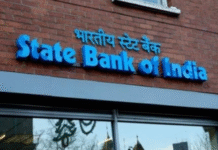Mumbai– The Reserve Bank of India (RBI) kept its key interest rate unchanged at 6 per cent for the third time in succession at its final bi-monthly monetary policy review of the fiscal, citing upside risks for inflation from rising global crude oil prices and various domestic factors. India Inc welcomed the decision as being “on expected lines”.
Announcing the first policy review after the Union Budget 2018-19 presented last week, the RBI said its decision to keep its repo, or short term lending rate for commercial banks, unchanged is consistent with the neutral stance of the central bank aimed at achieving its median inflation target of 4 per cent.
“Consequently, the reverse repo rate remains at 5.75 per cent, and the marginal standing facility (MSF) rate and the Bank Rate at 6.25 per cent,” an RBI statement said following the meeting of the six-member Monetary Policy Committee (MPC).
“We expect headline inflation to be at 5.1 per cent in the fourth quarter (January-March), including the impact of HRA (house rent allowance) to central employees, up from the 4.6 per cent in Q3,” RBI Governor Urjit Patel told reporters here after release of the MPC statement.
The continuing rise in food and fuel prices pushed India’s annual retail inflation rate over the five per cent mark in December 2017 to 5.21 per cent, from 4.88 per cent in November 2017.
Elaborating on the upside risks to inflation, the RBI listed half a dozen factors.
“First, international crude oil prices have firmed up sharply since August 2017, while non-oil industrial raw material prices have also witnessed a global uptick,” the MPC statement said.
“Second, the staggered impact of HRA increases by various state governments may push up headline inflation further in 2018-19, and potentially induce second-round effects.
“Third, the Union Budget 2018-19 has proposed revised guidelines for arriving at the minimum support prices (MSPs) for kharif crops. Fourth, the Budget has also proposed an increase in customs duty on a number of items.”
“Fifth, fiscal slippage as indicated in the Budget could impinge on the inflation outlook. Sixth, the confluence of domestic fiscal developments and normalisation of monetary policy by major advanced economies could further adversely impact financing conditions and undermine the confidence of external investors,” it added.
Five members of the MPC, including the three external ones and the Governor, voted in favour of the decision, while Executive Director Michael Patra voted for an increase in the policy rate by 25 basis points.
Noting the need for “vigilance” on inflation, the RBI also cut its earlier Gross Value Added (GVA), which excludes taxes but includes subsidies, growth forecast for the current fiscal to 6.6 percent, from 6.7 per cent.
In a move to speed up retail transmission by banks of the central bank’s cuts in its lending rate, the RBI said that it will link the Base Rate with the Marginal Cost of Funds-based Lending Rate (MCLR) from the next fiscal.
Since MCLR is more sensitive to policy rate signals, the RBI has decided to harmonise the methodology of determining benchmark rates by linking the Base Rate to the MCLR with effect from April 1, 2018, an RBI release said.
The RBI introduced the MCLR from April 1, 2016, as a system working in tandem with its policy rates, which commercial banks have been slow in accepting, preferring to continue with the Base Rate regime.
Besides, in a move to provide relief to the micro, small and medium enterprises (MSME) sector which was “badly hit” by the implementation of the Goods and Services Tax (GST), the RBI on Wednesday gave them an extension of up to 180 days to clear their loans to banks.
In addition, the RBI also removed credit caps on MSME in the services sector under priority sector.
The central bank further announced the scrapping of subsidies given to banks to install ATM machines and cash-recyclers and said that this would give a boost to digital transactions.
India Inc on Wednesday welcomed the RBI decision stating that it was “on expected lines”, while lauding move to extend the time for repayment of loans by MSMEs.
“Apart from the status quo in rates that was widely anticipated, the forbearance allowed to MSME borrowers, broadening the definition of priority sector lending and simplification of repo directions among others are all positive steps towards a stable macro environment,” State Bank of India Chairman Rajnish Kumar said in a statement here.
Industry chamber Assocham President Sandeep Jajodia said: “The RBI decision is a relief for India Inc, as some of the concerns raised by the central bank, including the inflation crossing the 5 per cent threshold and uncertainty over crude prices, are quite justified.
“The RBI has rightly taken note of the difficulties that arose for the MSMEs in the loan repayments following Goods and Services Tax implementation.”
Federation of Indian Chambers of Commerce and Industry (Ficci) President Rashesh Shah said: “Undoubtedly, there has been a missed opportunity of lowering interest rates significantly, which could have provided a major boost to private investment.
“Going forward, we hope that the RBI will give an equal consideration to the growth concerns, especially given the fact that inflationary pressures in India are largely due to supply side factors on the agriculture front.” (IANS)






